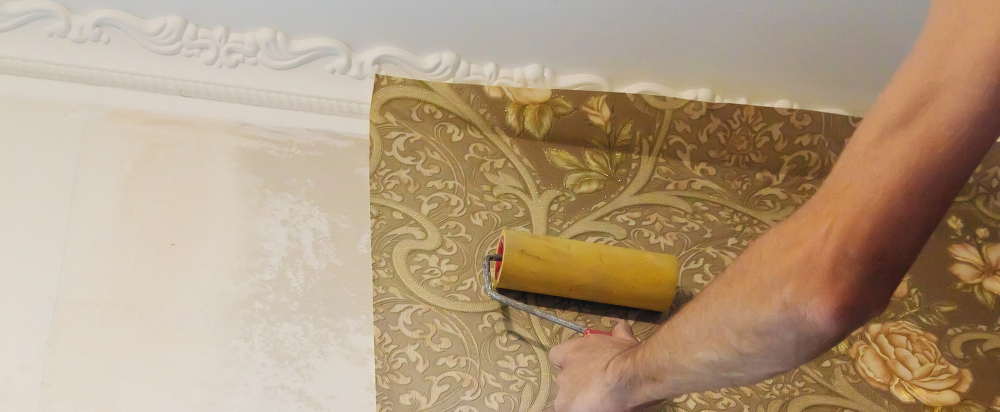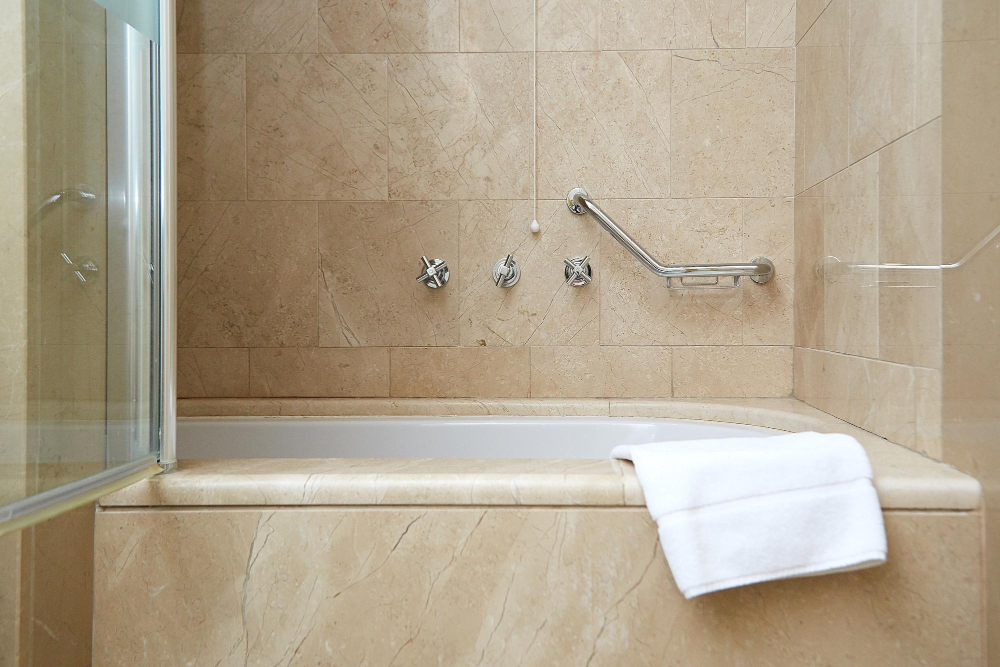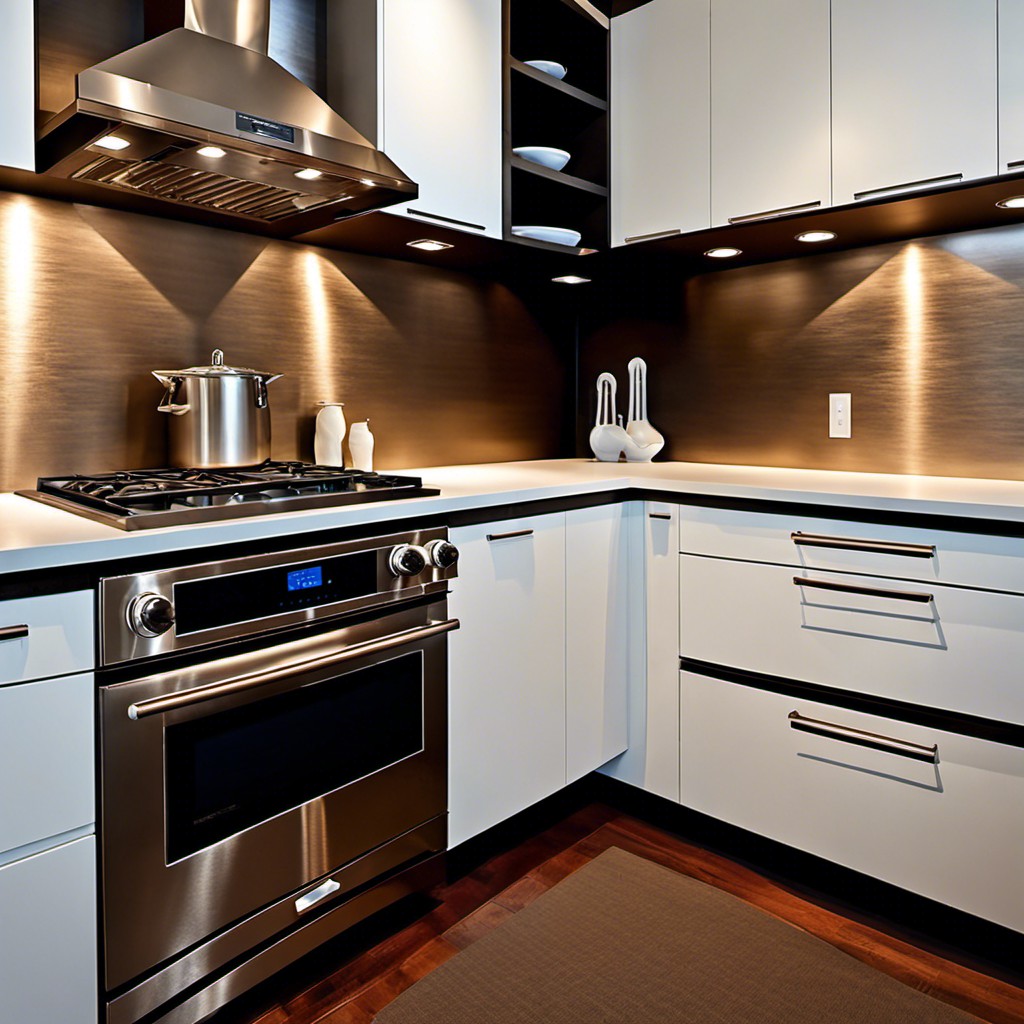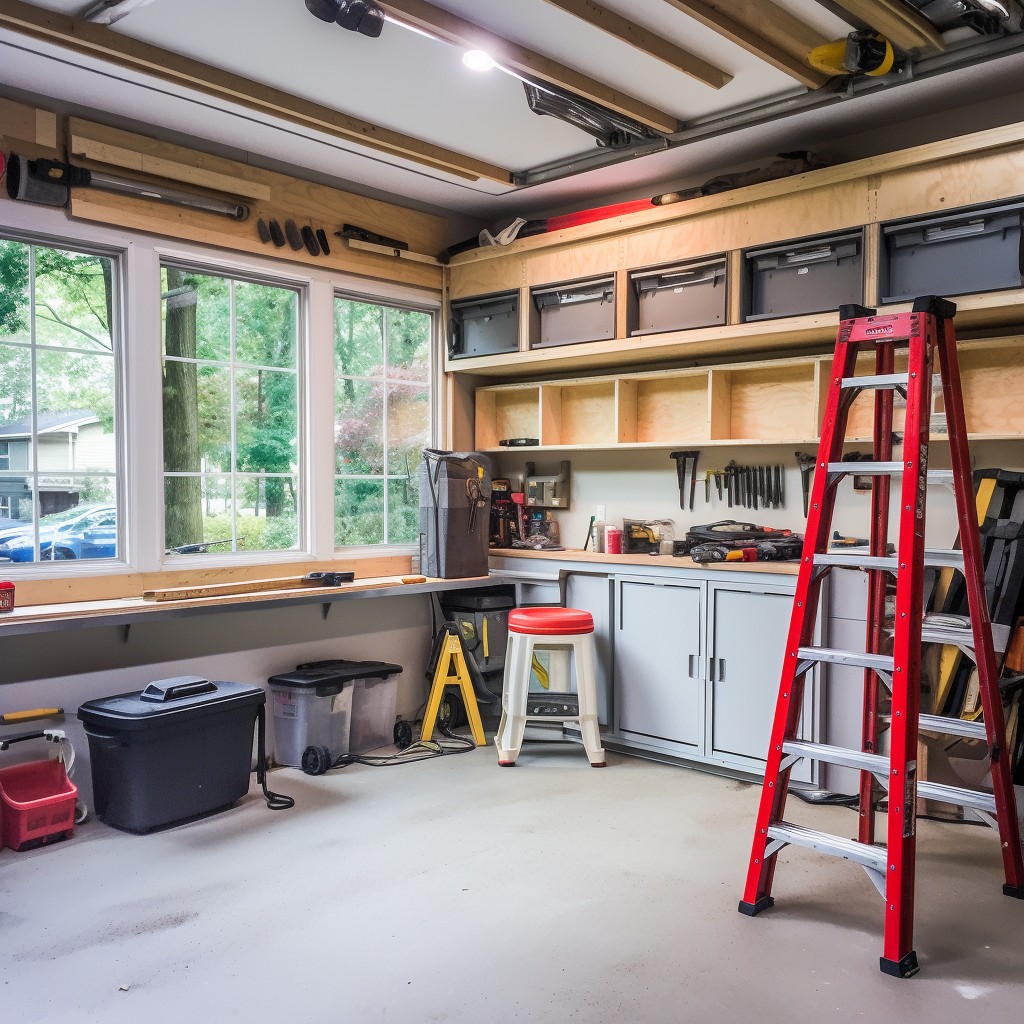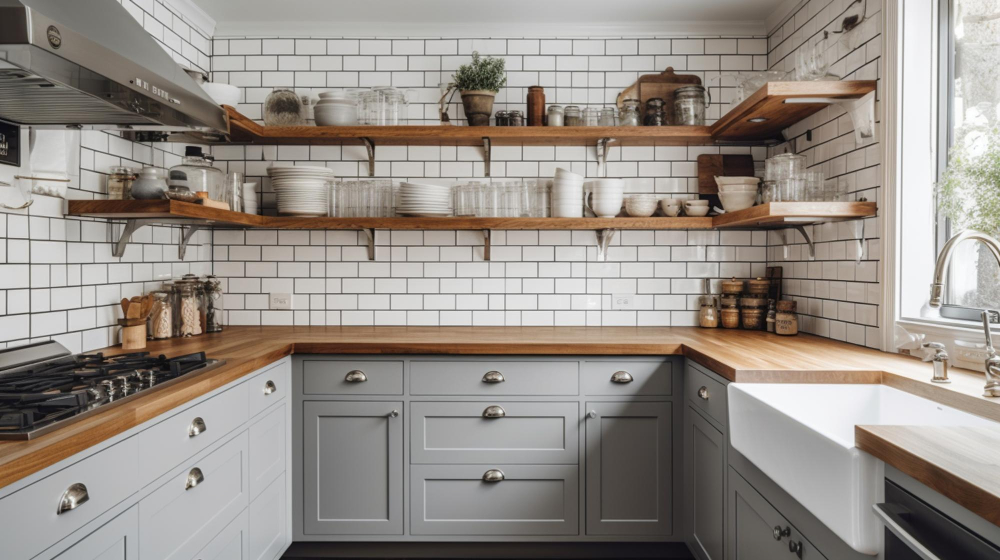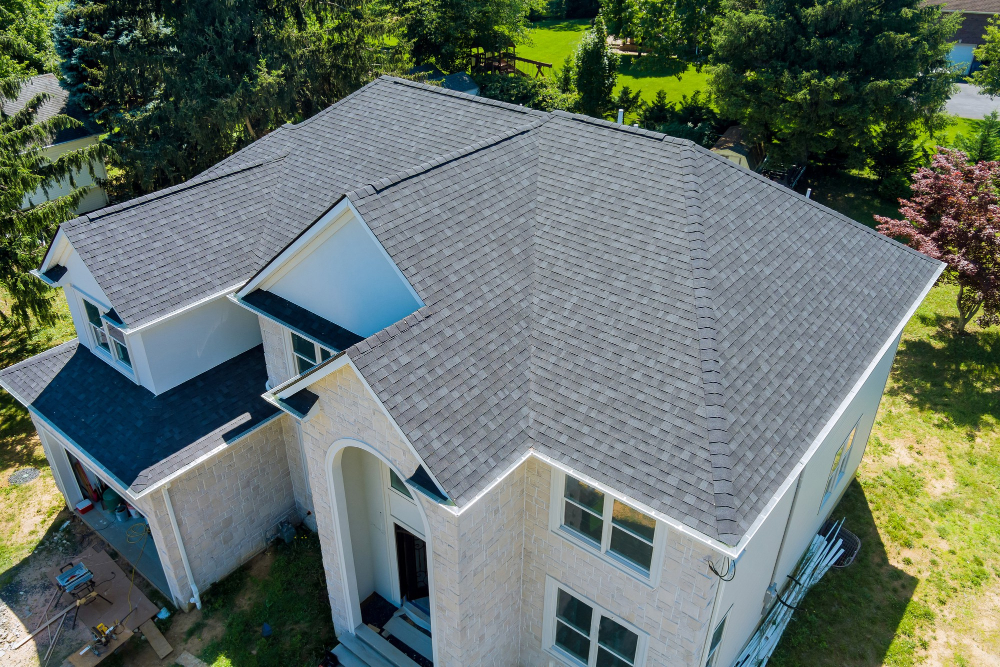Last updated on
Explore the world of shiplap alternatives as we dive into various wall treatments that can transform your space, offering style and charm without breaking the bank.
Are you tired of the same old shiplap walls that seem to be everywhere these days? Don’t get us wrong, we love a good shiplap accent wall as much as the next person, but sometimes you want something a little different. That’s where this blog comes in! We’ve scoured the internet and our own decorating experiences to bring you some amazing shiplap alternatives that will give your home a unique and stunning look without breaking the bank.
So whether you’re looking for something rustic, modern, or somewhere in between, keep reading for some inspiring ideas!
Exploring Shiplap Alternatives
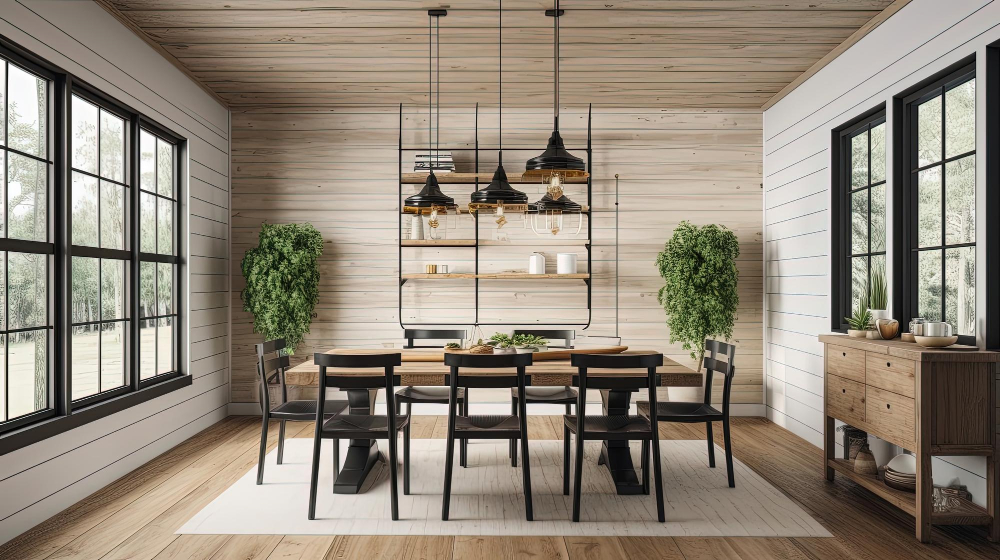
If you’re looking for a way to add texture and interest to your walls, but don’t want the same old shiplap look, there are plenty of alternatives out there. From reeded or fluted panels that offer a more traditional feel, to modern options like nickel gap boards or edgy plywood walls – the possibilities are endless.
One great option is vertical paneling. This style can be achieved with tongue-and-groove planks or even simple 1x2s arranged vertically on your wall.
It’s an easy DIY project that can give any room a fresh new look.
Another alternative is beadboard paneling which offers classic charm and works well in bathrooms and kitchens as it’s moisture-resistant. Reclaimed wood planking also adds warmth and character while being eco-friendly at the same time.
For those who prefer something more unique, consider using wallpaper innovations such as textured wallpaper or custom wall murals that will make your space stand out from others’.
Reeded or Fluted Panels
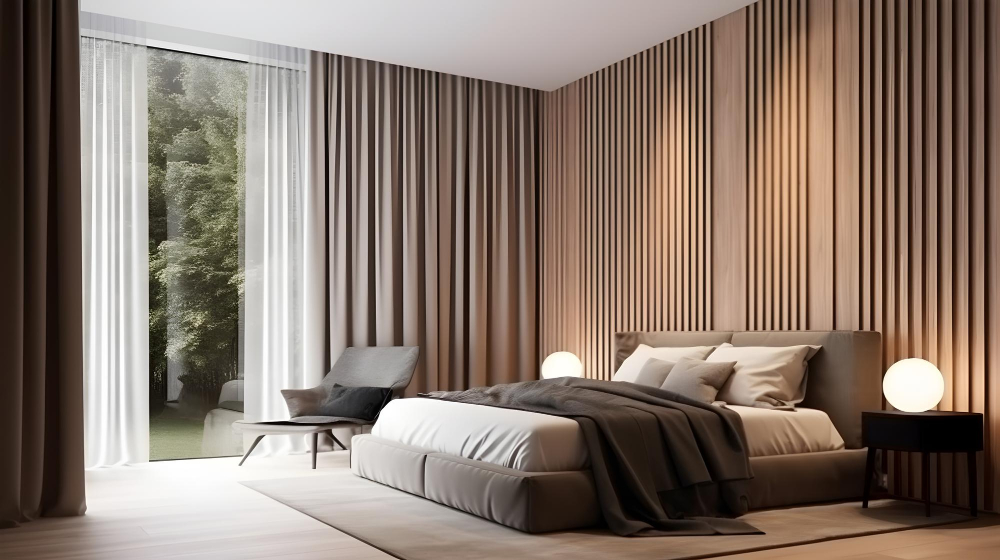
These panels feature vertical grooves that add depth and interest to your walls, creating an elegant and sophisticated look.
One of the benefits of reeded or fluted panels is their versatility. They can be used in any room of the house, from the living room to the bedroom, and they work well with both traditional and modern decor styles.
Plus, they come in a variety of materials such as MDF (medium-density fiberboard), PVC (polyvinyl chloride), wood veneer or solid wood.
Another advantage is that these types of wall treatments are relatively easy to install compared to other options like tile or stone veneers. You can even find pre-finished versions which means less mess during installation.
Vertical Paneling Options
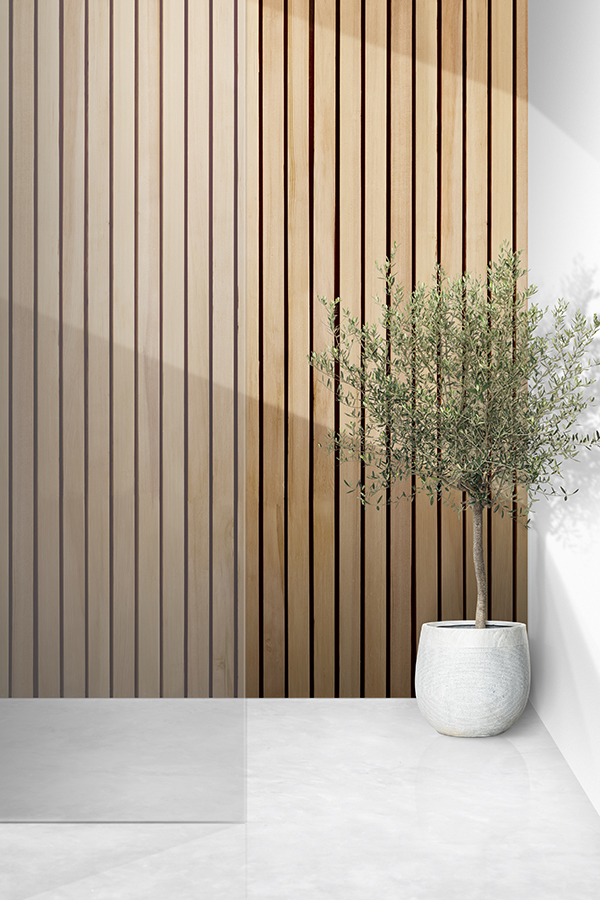
It’s also an excellent shiplap alternative that can give your space a unique look. There are many different types of vertical paneling options available, from tongue-and-groove boards to V-joint panels.
One popular option is the classic wainscoting style, which involves installing wood panels on the lower half of the wall and painting or wallpapering above it. This creates a beautiful contrast between the smooth upper portion of the wall and textured lower section.
Another option is using narrow strips of wood in varying widths for an eye-catching geometric pattern known as board-and-batten siding. This technique works well in modern spaces with clean lines but can also be used in traditional homes for added character.
If you’re looking for something more rustic, consider using rough-hewn planks or reclaimed barnwood vertically on your walls instead of horizontally like shiplap typically would be installed.
Beadboard Alternatives

It’s a great way to add texture and interest to any room, but sometimes you want something different. Luckily, there are plenty of beadboard alternatives out there that can give you the same look without feeling like everyone else.
One option is V-groove paneling, which features similar grooves as beadboard but with wider spacing between them. This creates a more modern and streamlined look while still providing some texture.
Another alternative is tongue-and-groove paneling, which has interlocking edges that fit together seamlessly for a smooth finish. This type of paneling comes in various widths and can be painted or stained to match your decor style.
If you’re looking for something even more unique, consider using metal panels instead of wood. These panels come in various finishes such as copper or brushed aluminum and offer an industrial-chic vibe perfect for modern spaces.
Reclaimed Wood Planking
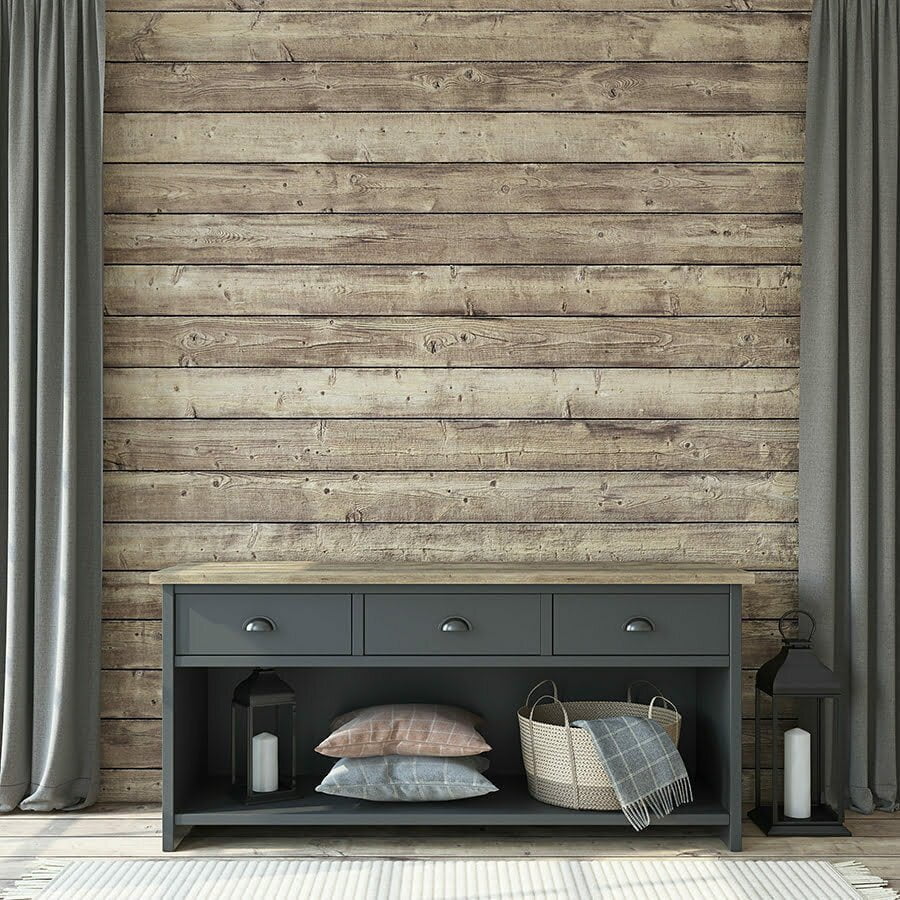
Not only does it look beautiful, but it’s also eco-friendly since you’re repurposing old wood instead of buying new materials. Reclaimed wood planks come in various sizes, colors, and textures depending on the source of the material.
One great thing about using reclaimed wood for your walls is that each plank has its own unique story to tell. You might find some with nail holes or saw marks from their previous life as part of an old barn or fence post.
These imperfections give them a rustic charm that cannot be replicated by modern manufacturing techniques.
When installing reclaimed wood planks on your walls, there are several ways to achieve different looks depending on how you arrange them. For example, staggering the lengths and widths will create a more random pattern while keeping everything uniform will result in clean lines.
Nickel Gap Boards
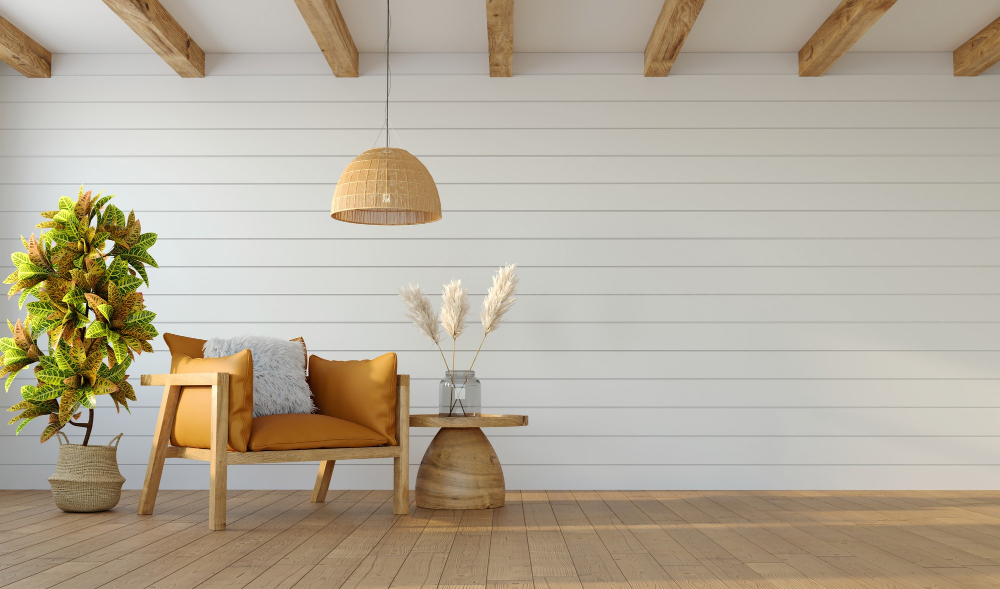
These boards have a small gap between each board, which creates an elegant and modern look. The gaps also allow for expansion and contraction of the wood, making them ideal for areas with fluctuating temperatures or humidity levels.
One of the great things about nickel gap boards is their versatility in terms of style. They can be painted any color you like or left natural to show off the beauty of the wood grain.
You can also choose from different widths and thicknesses depending on your preference.
Installation is relatively easy as well, especially if you opt for pre-finished boards that don’t require painting or staining after installation. Simply nail them into place using finishing nails and fill in any holes with putty before sanding smooth.
Caning
This technique involves weaving thin strips of rattan or cane through holes in a frame, creating an intricate pattern that adds texture and interest to any wall. Caning can be used on its own as a full wall treatment or as an accent panel within another material like wood or plaster.
One of the benefits of caning is its versatility – it works well with both traditional and modern decor styles. It also comes in different patterns, from simple squares to more complex geometric shapes, allowing you to choose the one that best suits your taste.
Another advantage of using caning is its affordability compared to other decorative materials such as reclaimed wood planks or custom murals. You can achieve a high-end look without breaking the bank by incorporating this timeless technique into your home decor.
Board and Batten

It’s a simple yet elegant way to add texture and interest to any room in your home. The technique involves installing narrow strips of wood (the “battens”) over wider boards (the “boards”), creating a grid-like pattern on the wall.
One of the great things about board and batten is its versatility. You can use it in virtually any room, from bedrooms to living rooms, dining areas, or even bathrooms! And with so many different types of wood available today, you can easily customize this look to fit your personal style.
Another advantage of board and batten is that it’s relatively easy to install yourself if you’re handy with tools. All you need are some basic carpentry skills, some lumber cut into strips at your local hardware store or sawmill shop along with nails/screws/glue depending on how permanent an installation you want.
Plaster
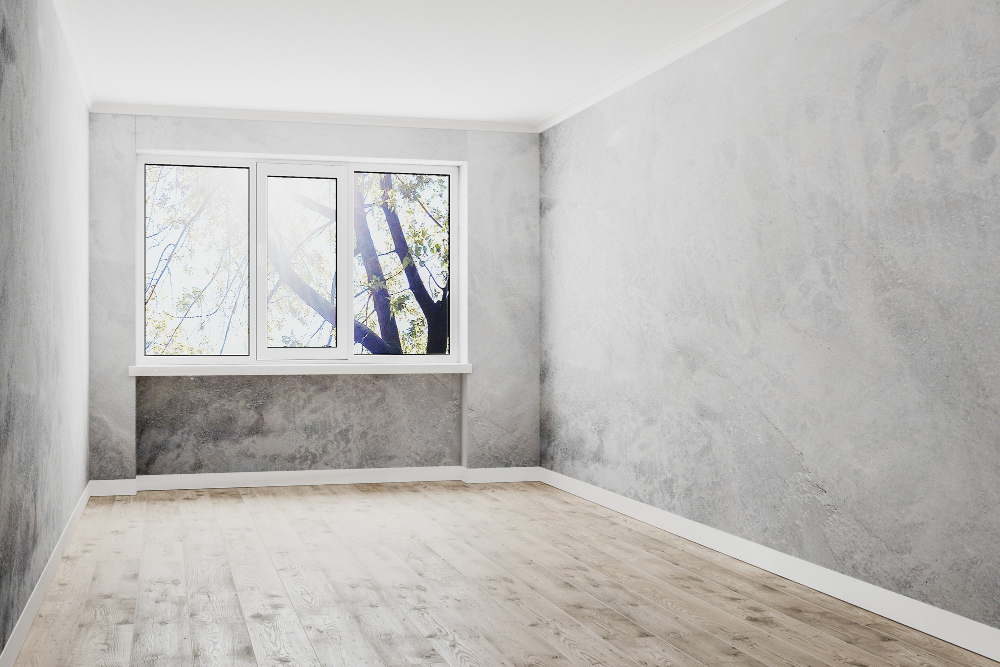
It’s versatile, durable, and can be molded into any shape or texture you desire. Plaster walls have a timeless elegance that can add character to any room in your home.
One of the great things about plaster is its ability to create unique textures on your walls. From smooth and polished finishes to rough and rustic looks, plaster offers endless possibilities for customization.
Another advantage of using plaster as an alternative to shiplap is its durability. Unlike wood paneling which may warp or rot over time, properly installed plaster will last for decades with minimal maintenance.
Wall Skins: Pros and Cons
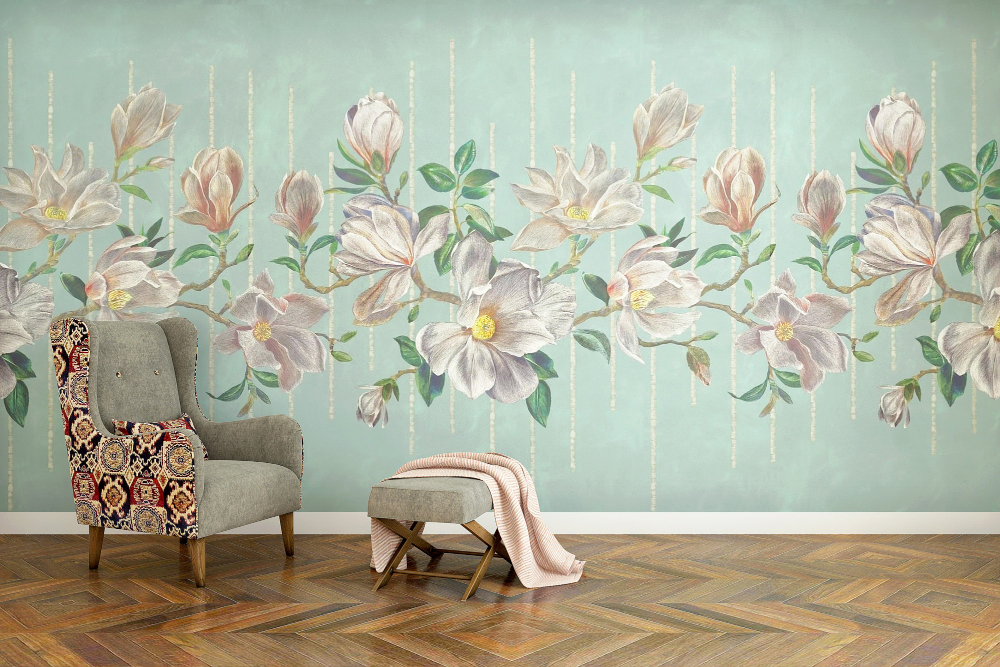
They offer an easy and affordable way to transform your walls without having to go through the hassle of traditional wall treatments. Wall skins come in various materials, including vinyl, fabric, and even metal sheets.
One of the biggest advantages of using wall skins is their ease of installation. Unlike other wall treatments that require professional help or specialized tools, most wall skin products can be installed by anyone with basic DIY skills.
Another advantage is their versatility – they can be used on any type of surface from drywall to concrete walls. Wall skins also come in a wide range of colors and patterns so you’re sure to find something that suits your style.
However, there are some downsides as well when it comes to using wall skins for your home decor needs. One major disadvantage is that they may not last as long as other types of treatments like paint or wallpaper since they tend to peel off over time especially if exposed directly under sunlight or heat sources such as radiators.
Additionally removing them might damage underlying surfaces which could lead you into more expenses than anticipated during installation.
Edgy Plywood Walls
Plus, plywood is an affordable material that’s easy to work with, making it a great option for those on a budget.
If you’re looking for something edgy and modern, consider using plywood as your wall treatment. You can leave it raw or stain/paint it in any color you like.
One popular trend is using black-stained plywood panels as an accent wall in living rooms or bedrooms.
Another way to use plywood is by creating geometric patterns on the walls with different sized panels cut into triangles or hexagons. This creates depth and interest while still maintaining a minimalist look.
For those who want more texture, try sanding down the edges of each panel before installation for added dimensionality.
Drywall Texturing Techniques
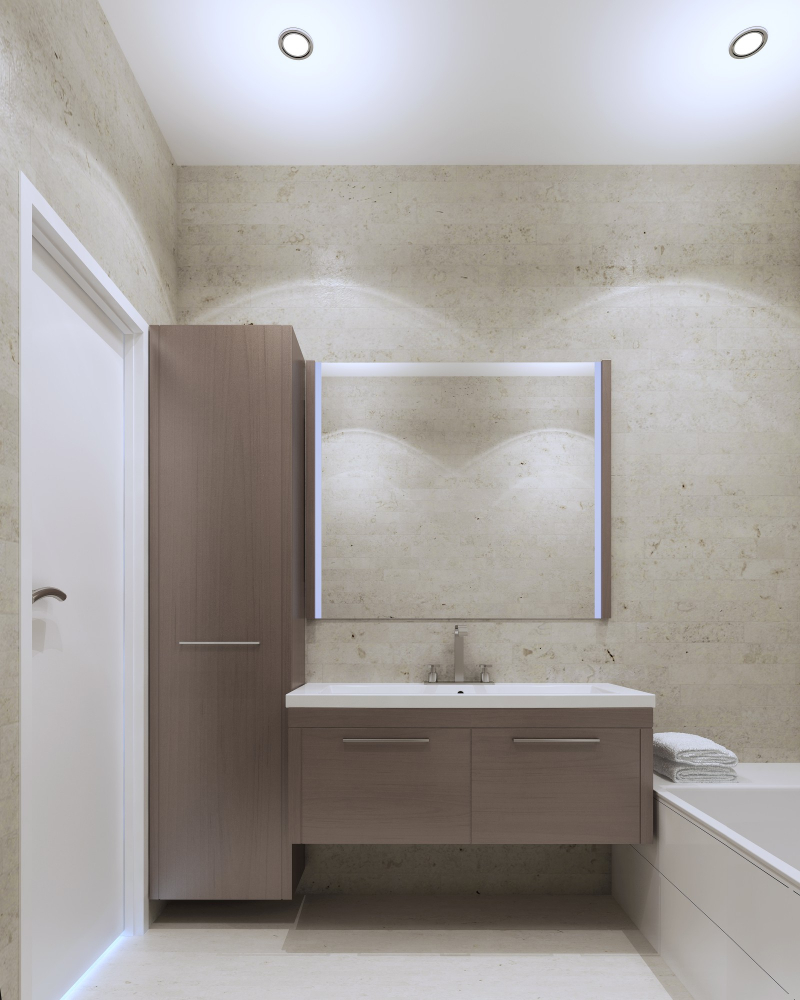
From smooth finishes to more intricate patterns, there are many options available that can be customized according to your preferences.
One popular technique is called skip trowel, which involves applying joint compound in a random pattern with a trowel or putty knife. This creates an uneven texture that adds dimension and character to any room.
Another option is knockdown texture, which involves spraying joint compound onto the wall and then flattening it with a large trowel or scraper. The result is similar to skip trowel but has more of an organic feel due to its irregular shapes.
If you’re looking for something more subtle, consider sand swirls or stippling techniques. Sand swirls involve mixing sand into the joint compound before application while stippling uses brushes or rollers dipped in thinned-out paint applied over drywall mud.
Textured Wallpaper
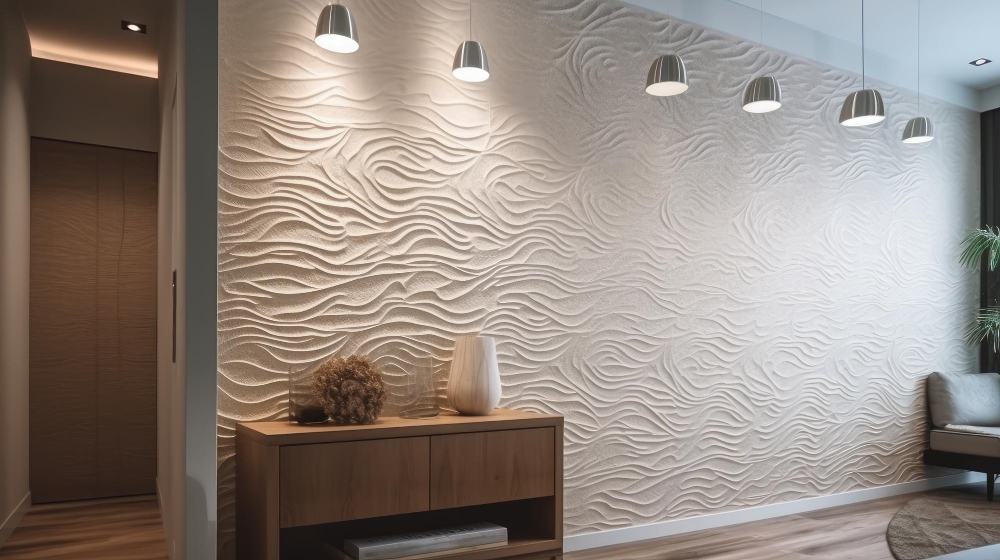
With endless options available, you can choose from subtle textures like linen or grasscloth, or go bold with geometric patterns and 3D designs.
One of the best things about textured wallpaper is that it’s easy to install. Most brands come with adhesive backing, so all you need is a smooth surface and some patience.
Plus, if you ever get tired of your design choice down the road, removing textured wallpaper won’t damage your walls as much as other treatments might.
Another benefit? Textured wallpapers are often more affordable than other wall treatment options while still providing an elevated look in any room. Whether it’s adding warmth to a bedroom or creating visual interest in an entryway – there’s no limit on how this versatile material can be used!
Brick and Stone Veneers
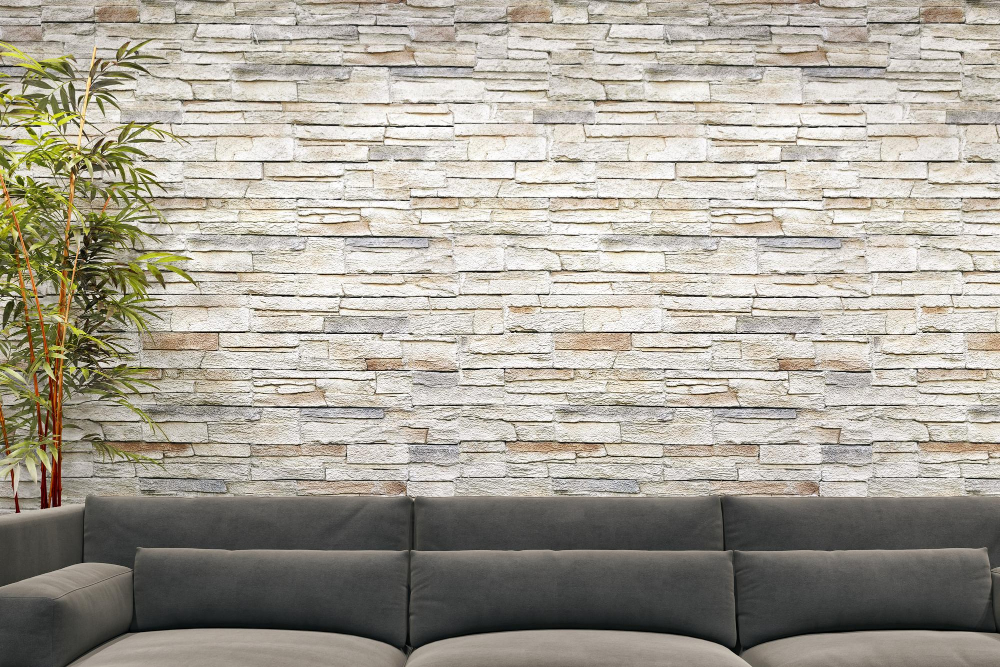
These thin slices of brick or stone can be applied directly onto drywall, making them an easy DIY project for those with some basic handyman skills.
One advantage of using veneers is that they come in a variety of colors, textures, and sizes. This means you can choose the perfect style for your home’s decor.
For example, if you’re going for a rustic look, consider using rough-hewn stones or bricks with irregular edges. If modern is more your style then go for sleeker lines.
Another benefit is that these materials are durable and long-lasting; they won’t chip or fade like paint might over time.
When it comes to installation there are two main types: adhesive-backed panels which stick directly onto the wall surface (these work best on smooth surfaces), or individual pieces which require mortar between each piece (better suited to uneven surfaces).
Tile
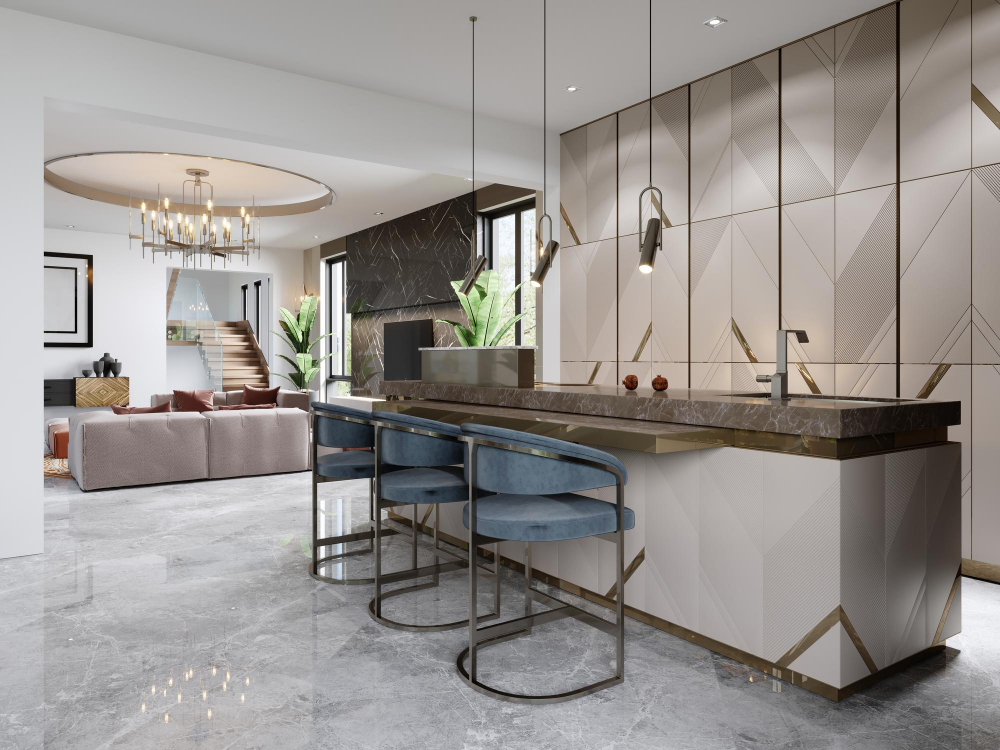
From classic subway tiles to intricate mosaics, there are endless possibilities when it comes to using tile as a shiplap alternative. One of the great things about tile is that it can be used in any room of the house, from kitchens and bathrooms to living rooms and bedrooms.
If you’re looking for something unique, consider using patterned or textured tiles. These can add depth and interest to your walls without overwhelming the space.
Another fun idea is creating a custom mural with mosaic tiles or hand-painted ceramic pieces.
When choosing tile as your wall treatment, keep in mind that installation can be more time-consuming than some other options on this list. However, if done correctly by professionals or experienced DIYers alike , tiled walls will last for years with minimal maintenance required.
Unique Tile Designs
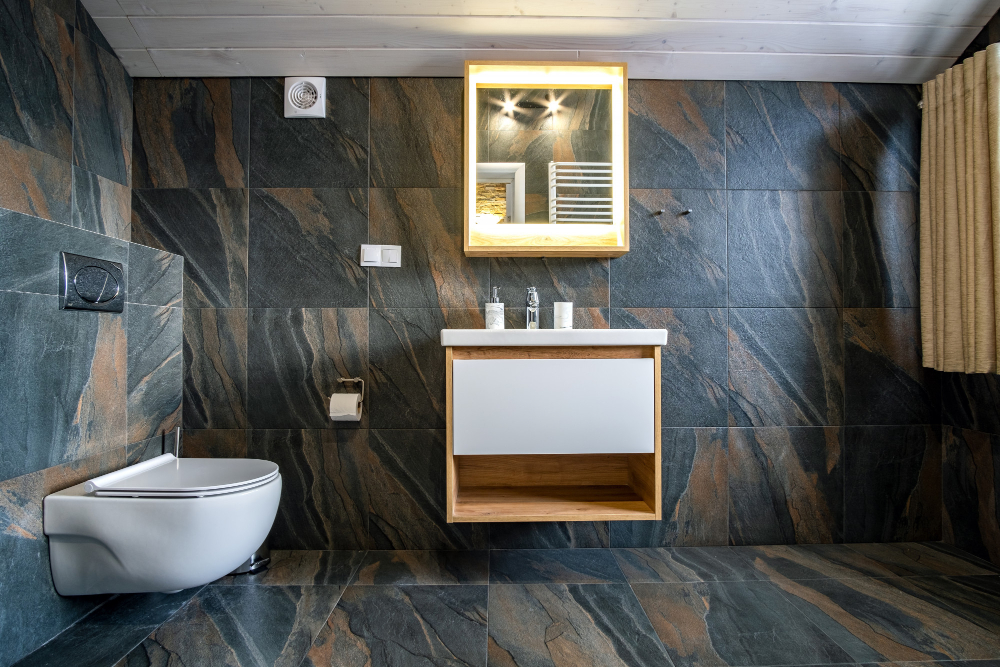
Tiles are an excellent option for high-traffic areas like kitchens and bathrooms because they’re durable, easy to clean, and come in a wide range of styles.
But don’t think that tiles have to be boring or basic! There are plenty of unique tile designs out there that can add texture, color, and personality to your walls. For example:
- Moroccan-inspired tiles with intricate patterns
- Geometric shapes in bold colors
- Textured subway tiles with raised patterns or 3D effects
- Hand-painted ceramic tiles featuring nature scenes or abstract art
The possibilities are endless when it comes to using tile as a wall treatment. You can create an accent wall behind your bathtub using colorful glass mosaic tiles or use large-format porcelain slabs on the entire bathroom wall for a sleek modern look.
Tiles also work well in other parts of the home beyond just bathrooms and kitchens. Consider adding some interest by tiling one section of your living room wall with patterned cement encaustic floor-style pieces.
Mosaic Wall Treatments
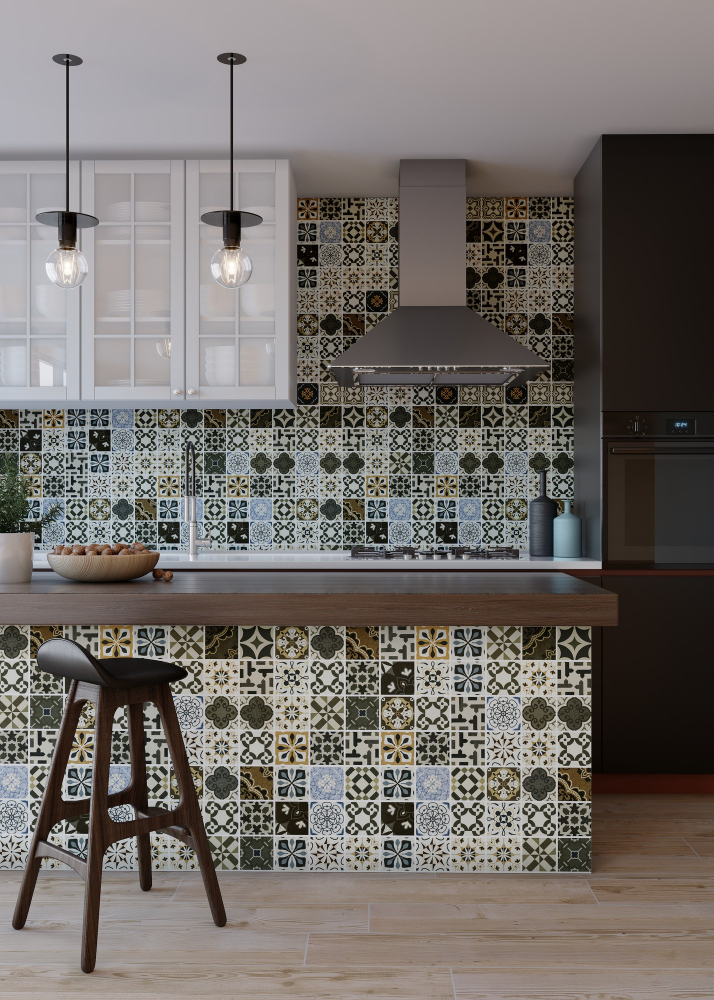
These intricate designs can be made from a variety of materials such as glass, ceramic tiles or even broken china pieces. Mosaics have been used for centuries in art and architecture but they’re now making their way into modern home decor.
One of the great things about mosaic wall treatments is that they can be customized to fit any style or theme you desire. Whether you want something bold and colorful or more subdued with neutral tones, there’s sure to be a design out there that will suit your taste.
Another advantage of using mosaics on your walls is that they’re incredibly durable. Unlike paint or wallpaper which may need frequent touch-ups over time due to wear-and-tear, mosaics are built-to-last thanks in part because each piece is individually placed by hand.
Wallpaper Innovations
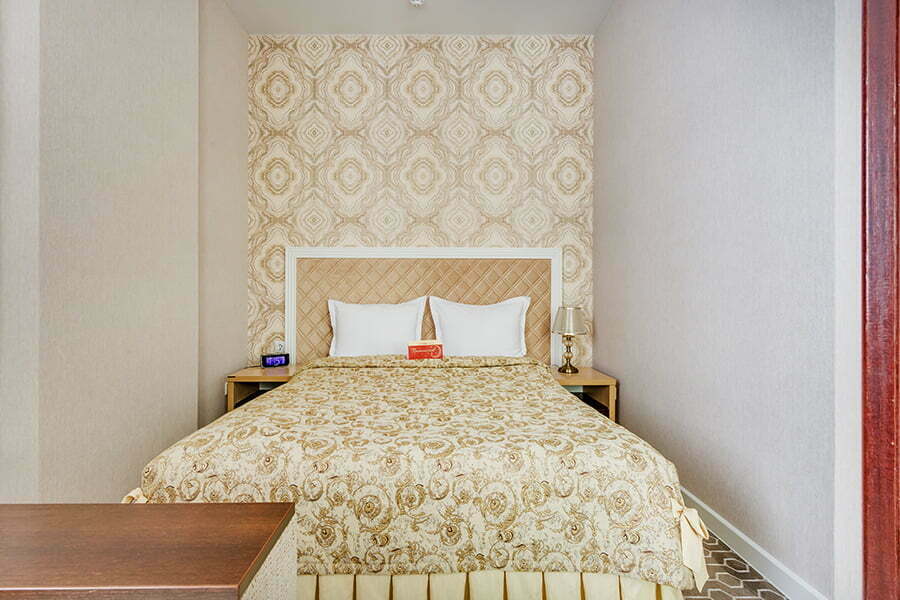
Today’s wallpaper innovations offer endless possibilities for creating unique and eye-catching wall treatments that can rival even the most stunning shiplap walls.
One of our favorite wallpaper innovations is removable wallpaper, also known as peel-and-stick or temporary wallpaper. This type of paper allows you to easily change up your decor without committing to a permanent design.
It’s perfect for renters who want to add some personality to their space without risking their security deposit.
Another exciting development in the world of wallpapers is digital printing technology, which allows designers and homeowners alike to create custom designs that are truly one-of-a-kind. From bold geometric patterns to intricate botanicals, there are no limits when it comes to designing your own bespoke wall covering.
Textured wallpapers have become increasingly popular in recent years thanks in part due its ability mimic other materials such as wood or brick with incredible accuracy while still being easy on budget compared with real materials.
Fabric Wall Coverings
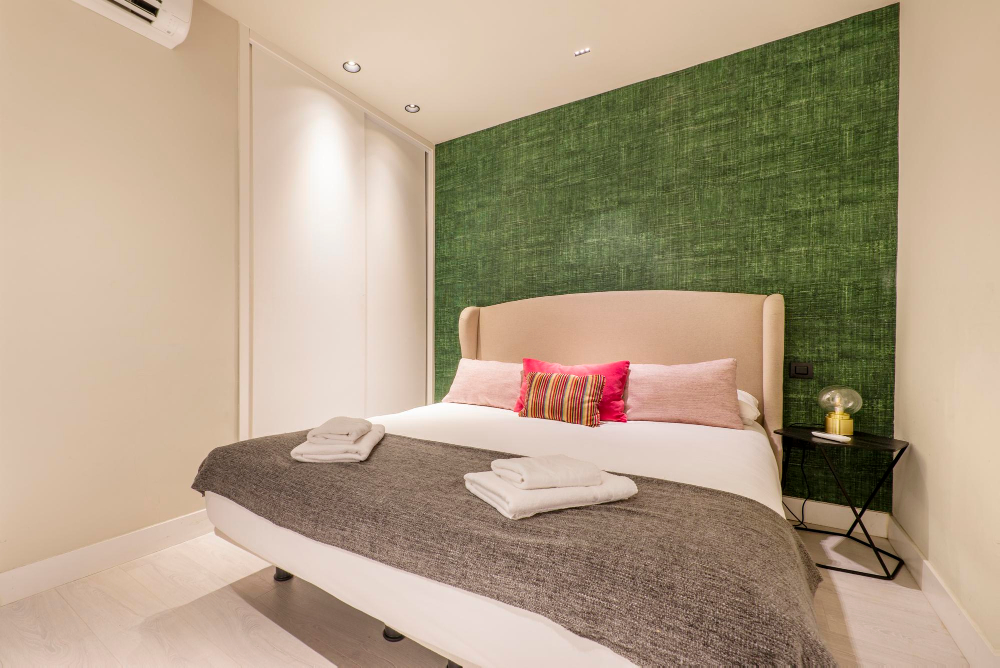
They can be used as an alternative to wallpaper or paint, and they come in a variety of colors, patterns, and textures. Fabric wall coverings are also easy to install with the right adhesive.
One popular type of fabric wall covering is stretched fabric panels. These panels consist of a wooden frame that is covered with fabric that has been stretched tightly over it.
The result is a smooth surface that looks like it was painted on the walls.
Another option for using fabrics on your walls is by creating tapestries or hanging curtains from ceiling tracks which will give you more flexibility when changing up your decor style without having to redo everything else in the room!.
When choosing fabrics for your walls, consider factors such as durability (especially if you have kids or pets), colorfastness (to avoid fading), washability (if needed) and fire resistance if required by local building codes.
Bamboo and Cork Panels
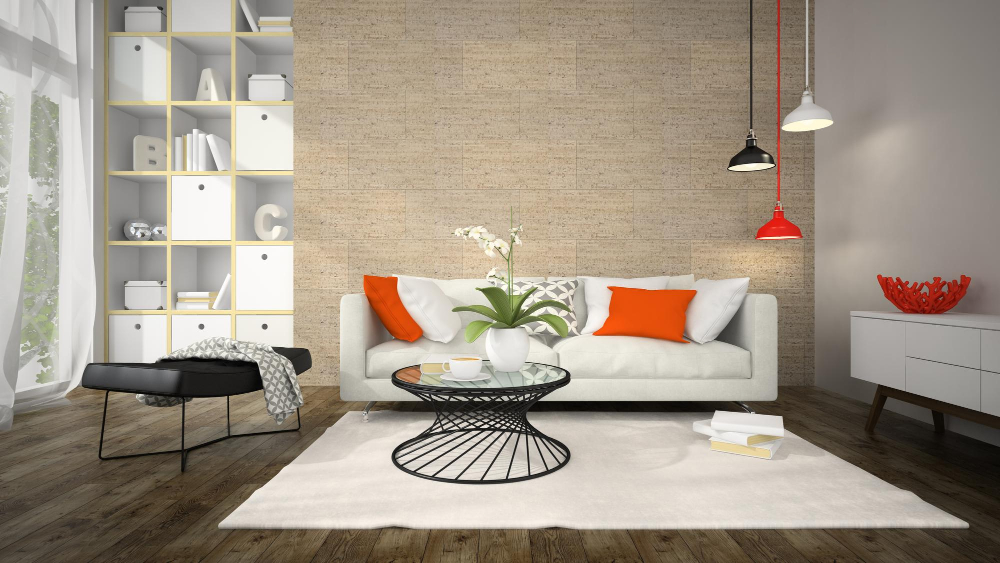
These materials are sustainable, renewable, and easy to install. Bamboo panels come in a variety of colors, from natural light tones to darker shades that mimic the look of hardwoods.
Cork is also available in different hues ranging from pale beige to rich chocolate brown.
Both bamboo and cork panels have unique textures that create visual interest on your walls while providing sound insulation properties as well. They’re perfect for creating an accent wall or covering an entire room with a warm organic feel.
One thing you should keep in mind when using these materials is their susceptibility to moisture damage if not sealed properly during installation or exposed over time; therefore it’s important always follow manufacturer instructions carefully before installing them on any surface.
Leather and Suede Walls
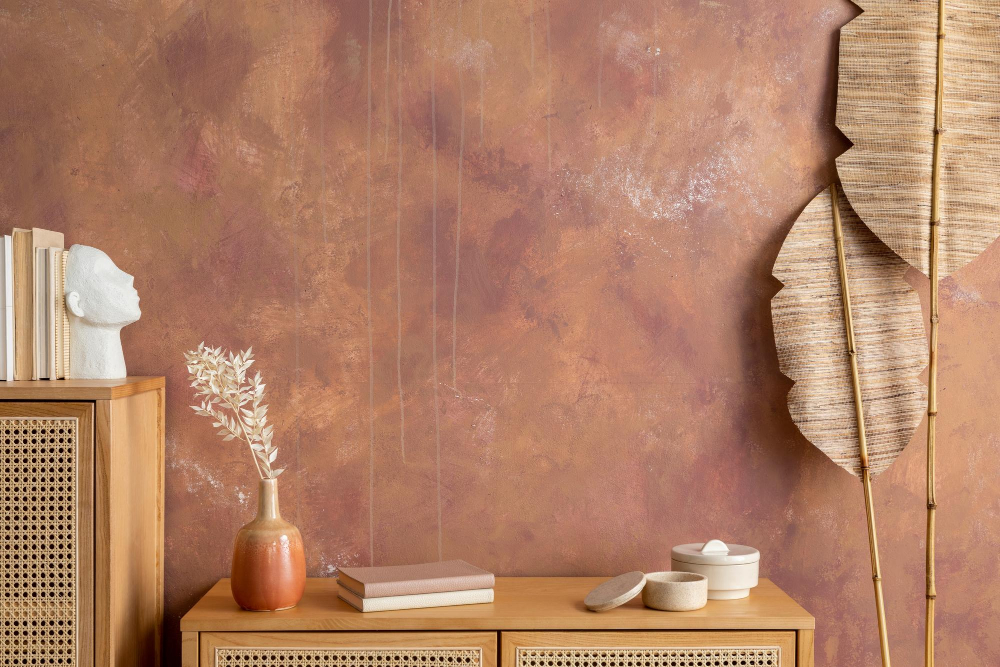
These materials add texture, warmth, and depth to any room in your home. Leather walls can be installed as panels or tiles that come in various sizes and colors.
Suede is typically applied as a spray-on finish that creates an elegant look with its soft texture.
One of the benefits of using leather or suede on your walls is their durability; they are easy to clean, maintain, and last for years without showing signs of wear-and-tear. They also provide excellent insulation properties by keeping heat inside during winter months while maintaining coolness during summer months.
When it comes to decorating with leather or suede walls, you have many options available at your disposal: from modern minimalist designs featuring monochromatic hues like black or white tones paired with metallic accents such as golds & silvers; To more rustic looks incorporating natural wood elements like reclaimed barnwood planks alongside rich browns & earthy greens.
Stenciling and Wall Decals
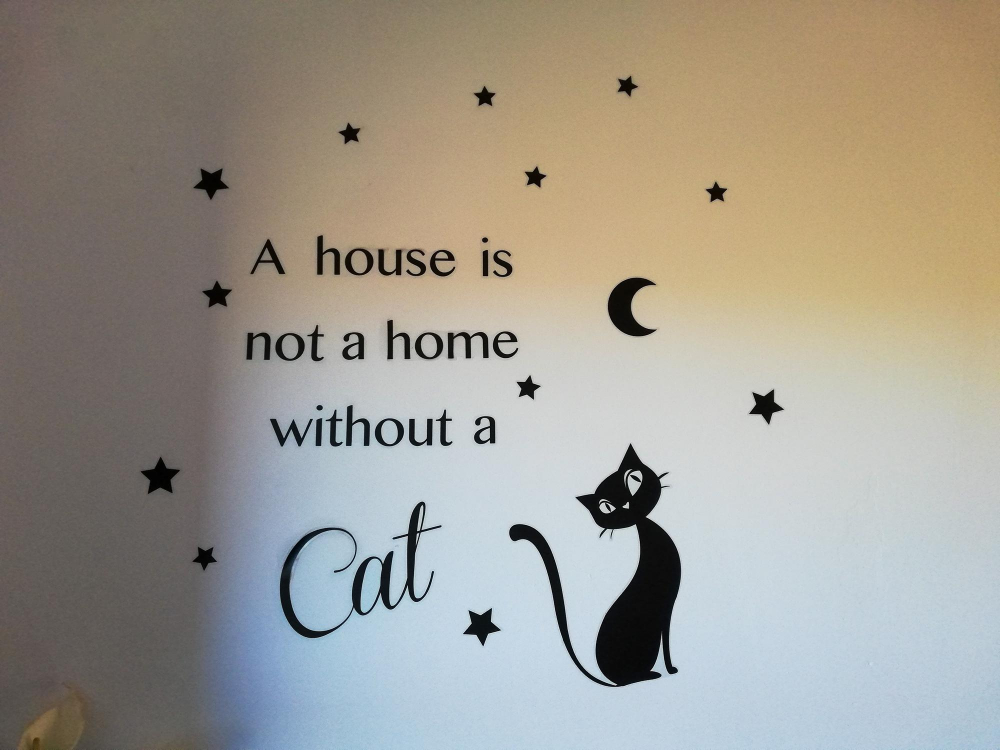
Stencils come in all shapes and sizes, from simple geometric patterns to intricate designs that mimic wallpaper. You can use them with paint or even texture paste for a raised effect.
Wall decals are another great option if you want something temporary or don’t want to commit to painting. They come in endless designs, from inspirational quotes and whimsical illustrations to realistic nature scenes.
Both stencils and wall decals offer an affordable way of adding interest without committing too much time or money into the project.
Paintable Wall Coverings
These products come in a variety of textures and patterns, from simple stripes to intricate geometric designs. They can be painted any color you like, making them an incredibly versatile option for any room in your home.
One popular type of paintable wall covering is embossed wallpaper. This product has raised patterns that create depth and texture on your walls when painted over with the color of your choice.
Another option is beadboard wallpaper which mimics the look of traditional beadboard but without the hassle or expense.
Paintable wall coverings are also great if you want to add some visual interest to a space without overwhelming it with too much pattern or texture. You can choose something subtle like linen-textured wallpaper or go bold with large-scale damask prints.
Decorative Metal Sheets
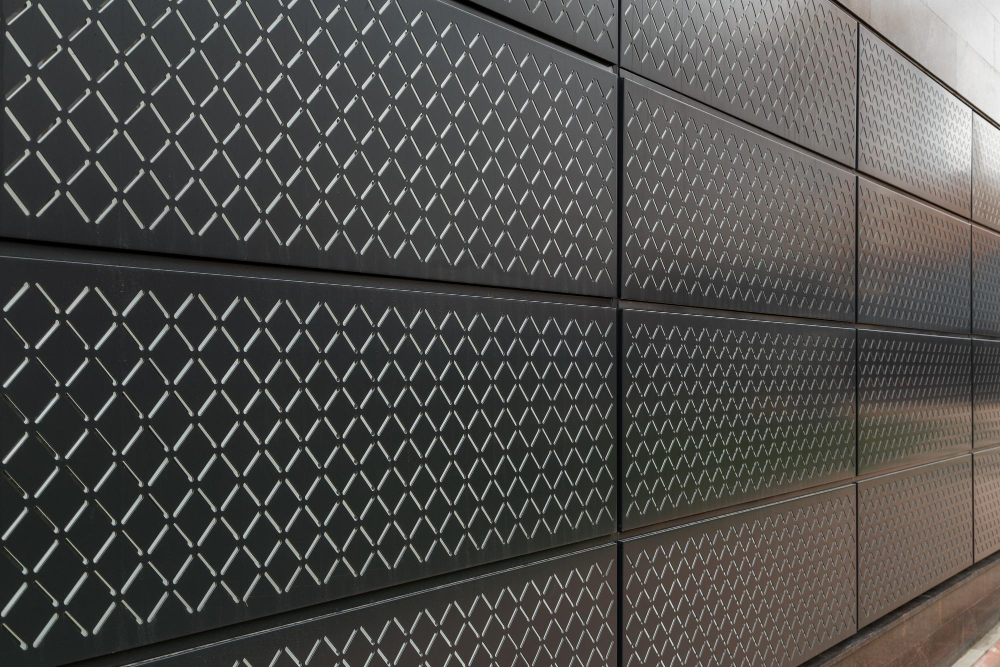
These sheets come in various finishes, including copper, brass, aluminum, and stainless steel. They can be used as an accent wall or cover the entire room for a bold statement.
One of the benefits of using decorative metal sheets is their durability. Unlike other materials that may scratch or dent easily over time, these panels hold up well against wear and tear while adding texture to your space.
Another advantage is their versatility in design options. You can choose from different patterns such as geometric shapes or floral motifs to create a custom look that fits your style perfectly.
Installation of decorative metal sheets requires some skill but with proper tools and techniques it’s not too difficult for DIY enthusiasts who want to take on this project themselves.
Custom Wall Murals
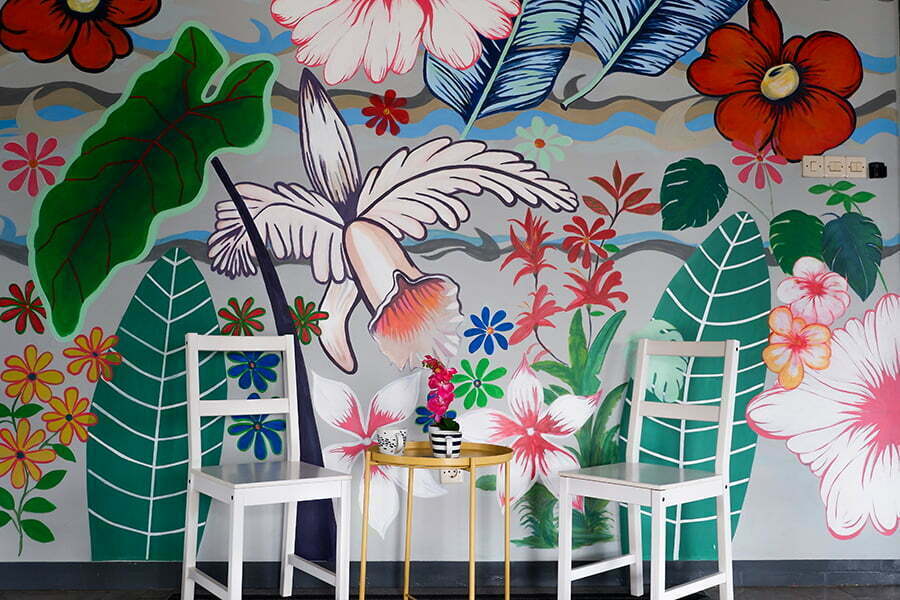
With advances in digital printing technology, it’s easier than ever to create a one-of-a-kind design that perfectly fits your space and style. Whether you want to showcase your favorite travel photos or create an abstract work of art, the possibilities are endless.
One great thing about custom murals is that they can be made to fit any size or shape of wall. This means you can cover an entire room with a breathtaking landscape scene or add just a small accent piece above your bed.
Another benefit of using murals as shiplap alternatives is their versatility – they can be applied on almost any surface including drywall, wood paneling, brick walls etc., making them perfect for both residential and commercial spaces.
When choosing the right mural design for your home decor project keep in mind factors such as lighting conditions (natural vs artificial), color scheme compatibility with other elements in the room like furniture pieces etc., texture preferences (smooth vs textured) among others.
Modern Large Format Tiles
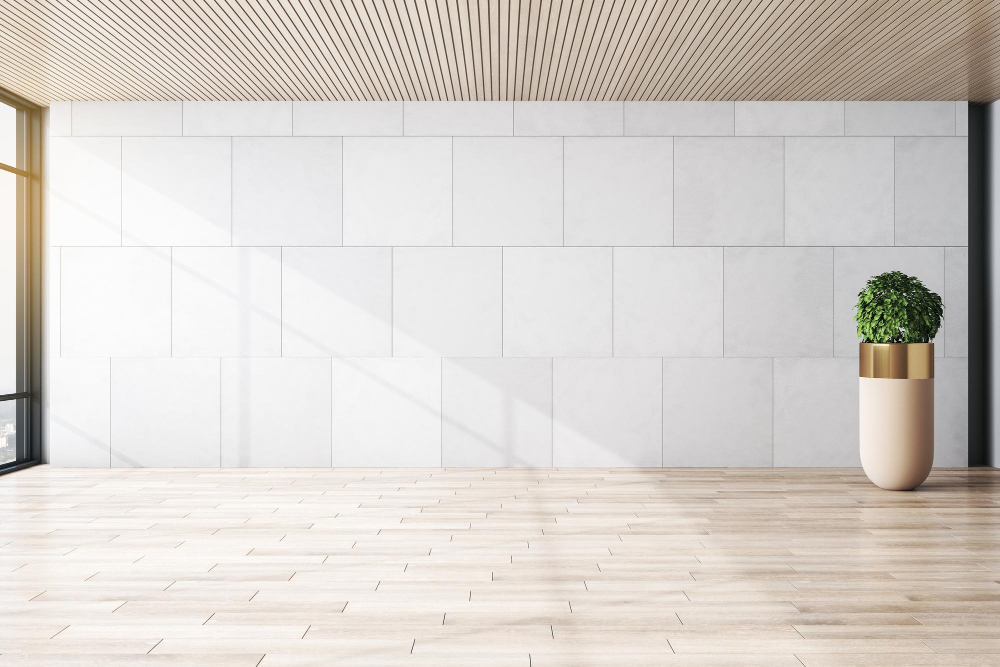
These oversized tiles can create a seamless look that is perfect for contemporary spaces. They come in various sizes, ranging from 24×48 inches to even larger formats like 60×120 inches.
One of the benefits of using large format tiles is that they require fewer grout lines, which means less maintenance and cleaning. These tiles can be used on both walls and floors, making them versatile options for any room in your home.
When it comes to design options with large format tiles, the possibilities are endless! You can choose from an array of colors and finishes such as matte or glossy surfaces. Some popular styles include marble-look porcelain slabs or concrete-inspired ceramic panels.
If you’re looking for something truly unique, consider using textured large-format tile designs like three-dimensional patterns or geometric shapes that add depth and interest to your space.
Acoustic Wall Panels
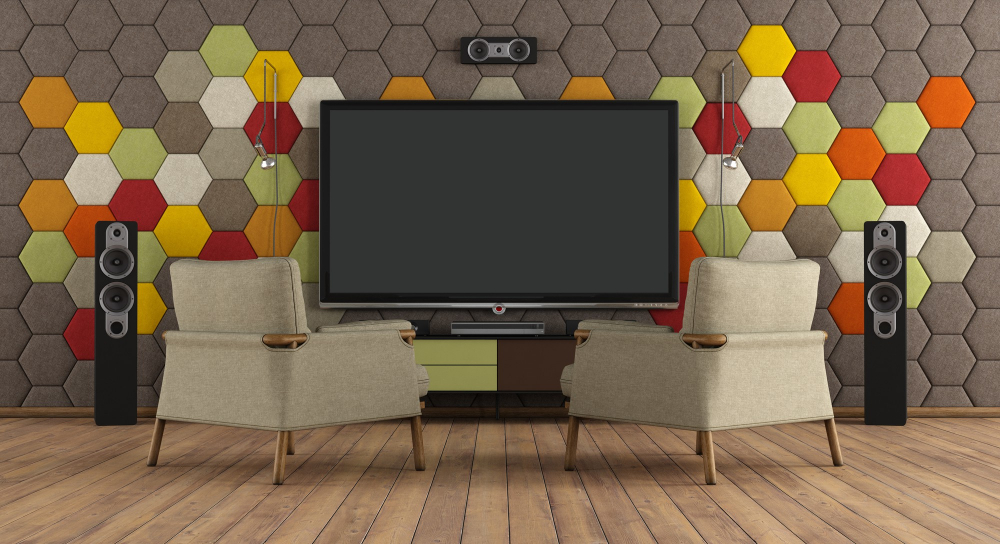
These panels are designed to absorb sound and reduce noise levels in your home, making them perfect for media rooms or any space where you want to minimize outside noise. Acoustic wall panels come in various shapes and sizes, so they can be customized to fit your specific needs.
One of the best things about acoustic wall panels is that they don’t have to look like traditional soundproofing materials. You can find options with unique textures or patterns that add visual interest while still serving their intended purpose.
Another benefit of using acoustic wall panels as an alternative to shiplap is their ease of installation. Most manufacturers offer simple DIY kits with everything you need included, making it easy for even novice decorators to install them on their own.
Patterned Wood
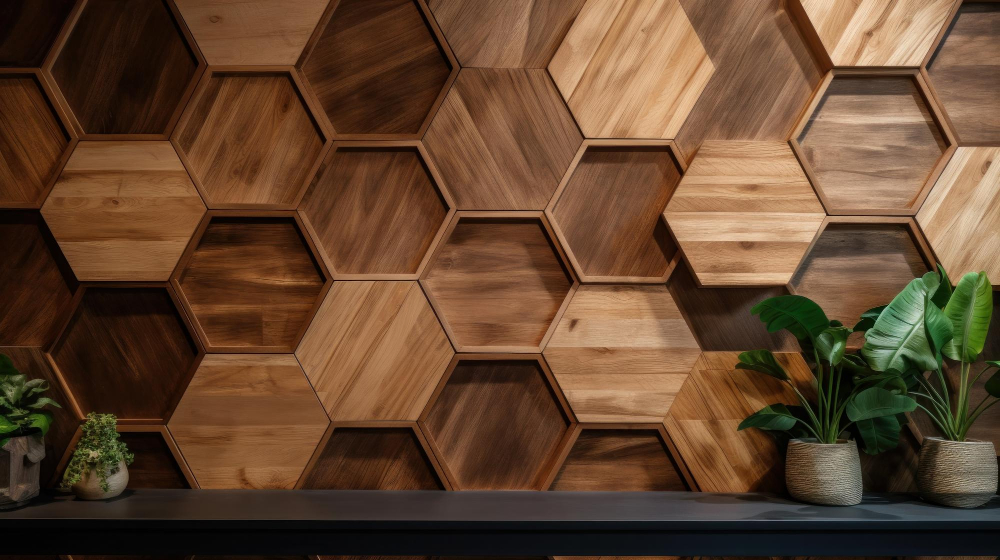
This type of wall treatment involves using different types of wood in various patterns to create a stunning visual effect. From herringbone and chevron designs to intricate geometric shapes, the possibilities are endless.
One popular option is parquet flooring that can be installed on walls instead of floors. Parquet panels come in many sizes and shapes, from squares or rectangles arranged diagonally or vertically with contrasting colors creating an interesting design.
Another way to incorporate patterned wood into your decor is by using reclaimed barnwood planks cut at different angles for a rustic look that adds texture and warmth while still being budget-friendly.
For those who prefer modern aesthetics, there are also options like laser-cut wooden panels with intricate designs that add depth without overwhelming the space visually.
Patterned wood can work well as an accent wall or even throughout an entire room depending on your style preferences.
Applied Molding
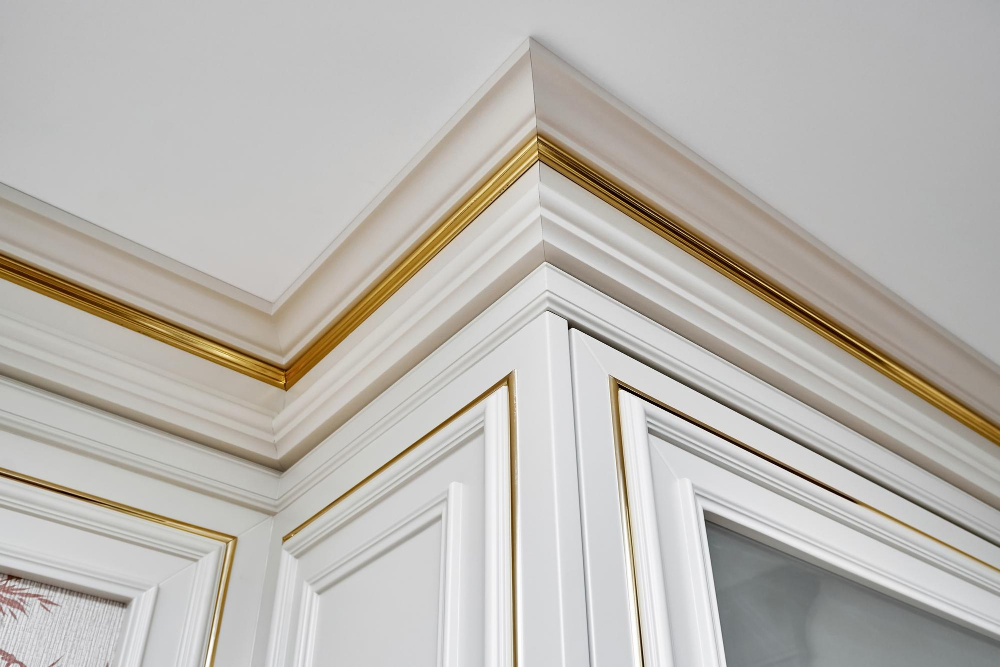
This technique involves adding strips of wood or other materials to the walls in a decorative pattern, creating an elegant and sophisticated look. The beauty of applied molding is that it can be customized to fit any style, from traditional to modern.
To achieve this look, you’ll need some basic carpentry skills and tools such as a saw, nail gun or hammer with finishing nails. You’ll also need the right type of molding for your project – there are many different styles available at your local hardware store.
Once you have all your supplies ready, start by measuring out where you want the moldings placed on the wall using painter’s tape as guidelines. Then cut each piece of molding according to those measurements using either miter cuts (for corners) or straight cuts (for straight sections).
Attach each piece with adhesive glue before nailing them into place.
The result will be stunning! Applied moldings create visual interest while giving walls texture without being too overwhelming like wallpaper patterns sometimes do.
FAQ
What is a cheap alternative for shiplap?
A cheap alternative for shiplap is using budget-friendly plywood, cut into planks of shiplap boards at stores like Lowes and Home Depot.
What is replacing shiplap in 2023?
In 2023, board-and-batten paneling is replacing shiplap as a popular wall paneling option.
Is shiplap outdated now?
Shiplap is not outdated, but its usage has evolved from adding rustic farmhouse style to adapting to more modern and sleek spaces.
What are some eco-friendly alternatives to shiplap for interior design?
Some eco-friendly alternatives to shiplap for interior design include reclaimed wood, bamboo, cork, and recycled metal.
How do shiplap alternatives compare in terms of durability and maintenance?
Shiplap alternatives vary in durability and maintenance requirements, with some options offering more resistance to wear and lower upkeep than others.
What are some lightweight shiplap alternatives suitable for DIY home renovation projects?
Some lightweight shiplap alternatives for DIY home renovation projects include tongue-and-groove planks, beadboard panels, and decorative wall panels.
Recap
Liked this article? Here's what you can read next:
